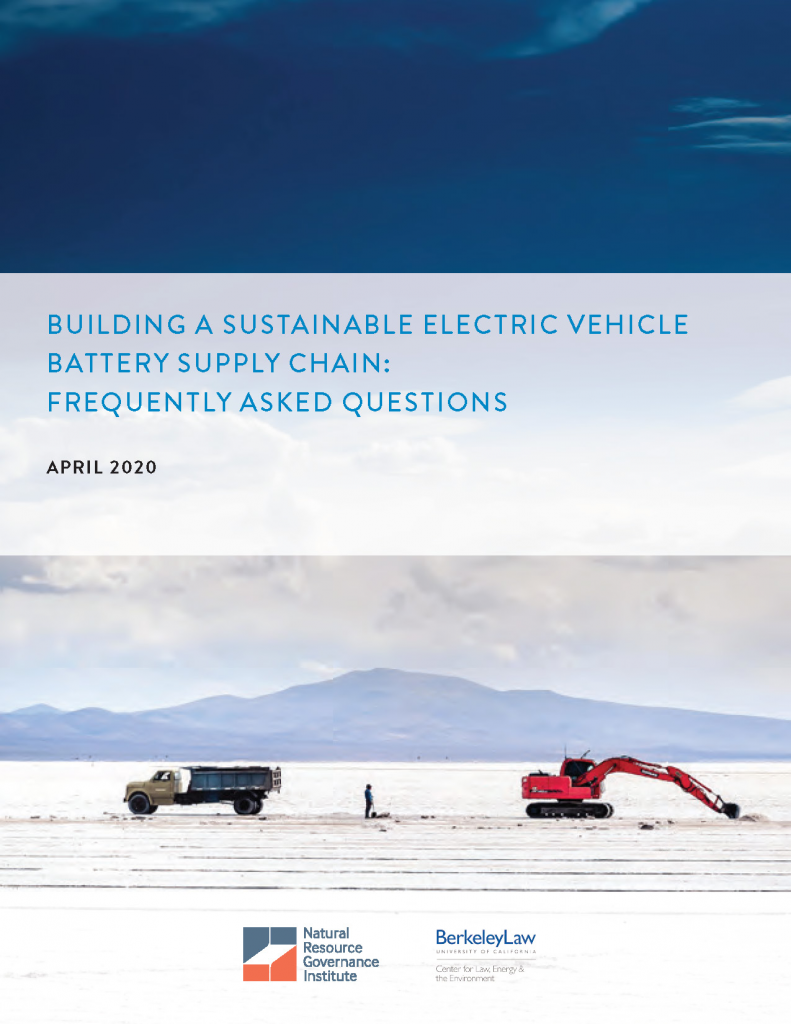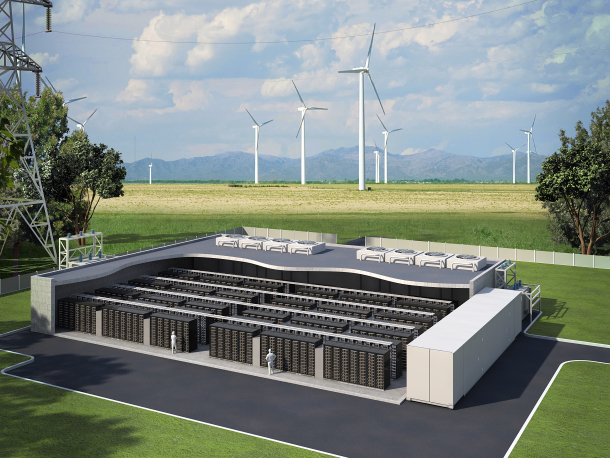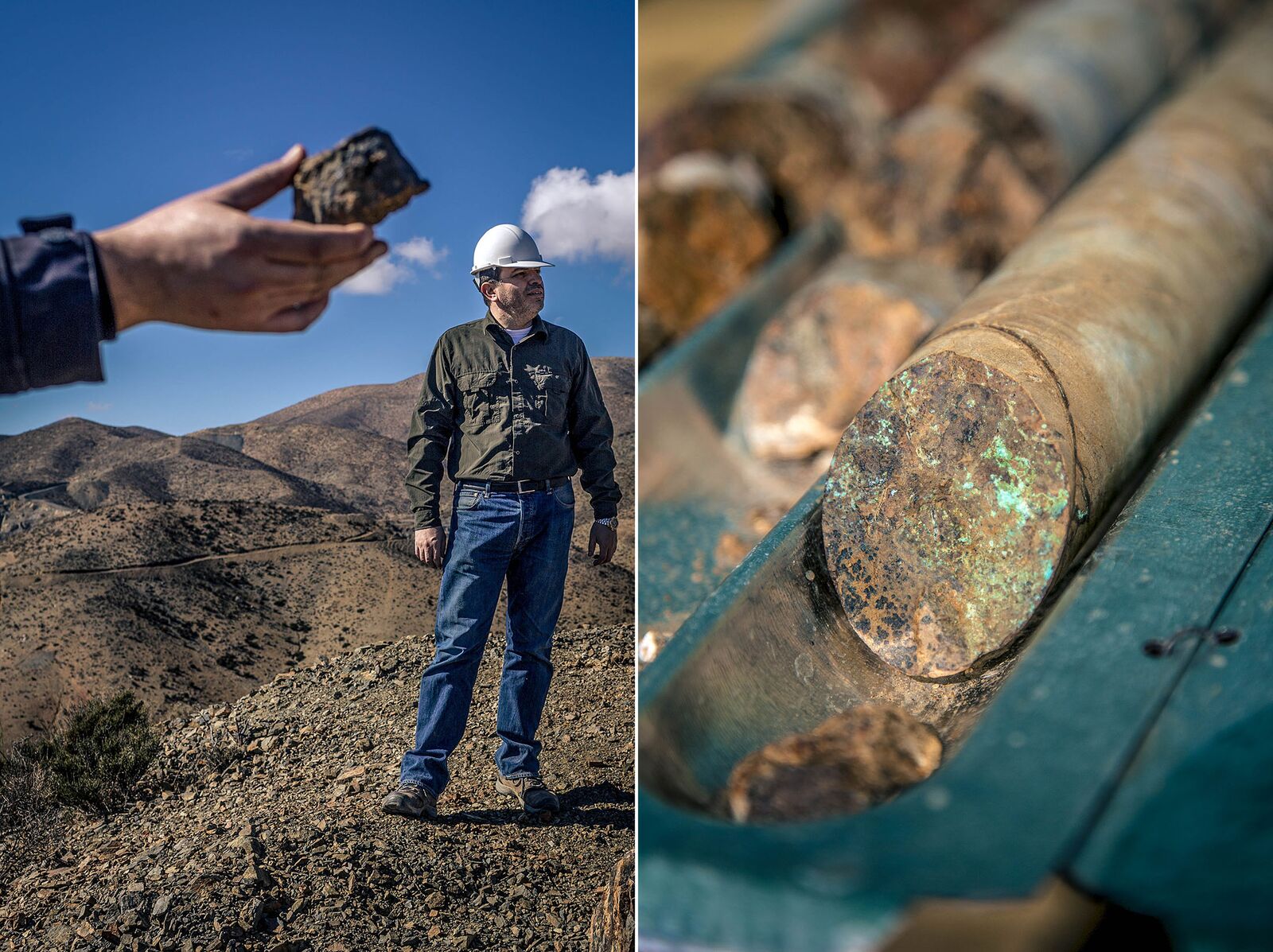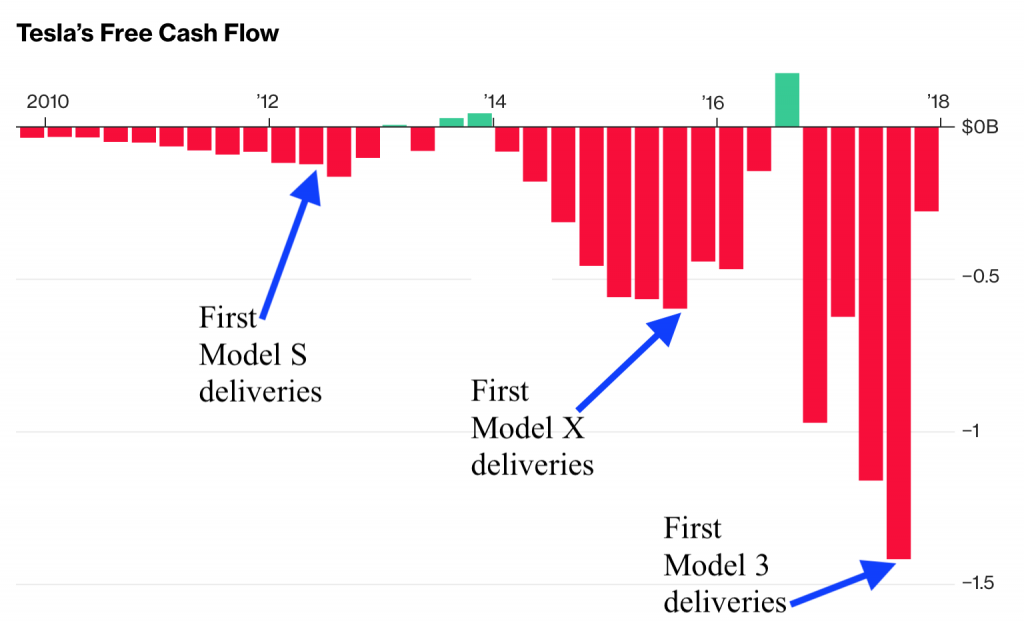
The global transition from fossil fuel-powered vehicles to battery electric vehicles (EVs) will require the production of hundreds of millions of batteries. This massive deployment frequently raises questions from the general public and critics alike about the sustainability of the battery supply chain, from mining impacts to vehicle carbon emissions.
Join me and Berkeley Law’s Center for Law, Energy & the Environment’s Patrick Heller and Ted Lamm today at noon Pacific Time for a discussion and Q&A session on the road to a sustainable EV battery supply chain.
You can register for this free event and download our recent FAQ on EV battery supply chains. Hope you can join!

I began working on climate change law and policy on January 20, 2009, the day I joined Berkeley Law, which was coincidentally Barack Obama’s Inauguration Day. So it’s been a full decade for me focusing exclusively on this subject (I focused on related land use and transit issues prior to 2009), roughly coinciding with the 2010s now coming to a close.
As we mark the end of this decade, two things stand out: remarkable progress reducing the price and deploying critical clean technologies, and dispiriting failure to reduce overall greenhouse gas emissions, with more severe climate impacts happening each year.
I noted some of these trends in a foreword to “Climate Change Law in the Asia Pacific” from Berkeley Law, which features articles from scholars in places like Japan, Korea, and Taiwan, as well as California.
To summarize the good news on clean technology:
- From 2009 to 2017, the levelized costs for utility-scale solar photovoltaic dropped 86 percent;
- Wind power levelized costs dropped 67 percent from 2009-2017; and
- Lithium ion battery prices (central to electric vehicles and grid energy storage) have dropped 85 percent from 2010 to 2018.
This progress is the key reason for optimism on climate change. With the price decreases, support for deployment has increased across the political spectrum and allowed for some remarkable success stories on emissions reductions, such as California’s ability to achieve its 2020 carbon goals four years earlier, due primarily to renewable energy deployment.
But despite the progress, we have this sobering data:
- Carbon parts per million have increased from 385 in 2009 to 411 (and counting).
And unsurprisingly, the bill is now coming due. This decade has brought some of the predicted severe climate impacts, such as unprecedented wildfires, droughts, extreme rain events and hurricanes, and warming oceans.
On the positive side, the extreme weather has helped shift public opinion in favor of climate action. But it’s come at a significant cost to human life, happiness, and ecosystems.
Hopefully in the 2020s we’ll see the widespread deployment of clean technologies and other climate-smart practices that we need to stabilize and reduce emissions. And while climate impacts will inevitably worsen, perhaps our ability to withstand them will improve, such as through electricity grid resilience in the face of wildfires and using natural infrastructure to lessen storm surges and flooding.
And to make any of these positives happen, we will need smart policies and public support and political leaders to enact them. I’ve had the good fortune to work on climate policy now for over a decade, and as the 2020s dawn, much work remains.
The dark winter months are a reminder that critical renewable resources like solar PV won’t be available to keep our electricity clean. And if the wind isn’t blowing, wind power is unavailable as well to meet demand. Absent baseload renewables like geothermal power, how do we achieve a 100% carbon-free in the dark, still winter time?
The answer is bulk — or seasonal — energy storage. This means massive energy storage facilities that can capture surplus renewable power like solar PV in the summer months, and store it for months until the winter.

Not many technologies can achieve this mass, seasonal storage, but Utility Dive offers a helpful list, summarized here:
- Pumped Hydro: this relatively common technology involves pumping water uphill with cheap surplus electricity and then releasing it downhill to generate power when needed. It’s been in use since the 1890s, and by the end of 2017, the US had about 22 gigawatts installed.
- Compressed Air Energy Storage: this technology involves pumping air into a confined space, like a container or underground cavern, then releasing the pressure to generate electricity when needed. It’s a capital-intensive system constrained by geography. To date, I only know of two facilities in operation, although more are in the planning stages.
- Lithium-ion battery banks: with falling battery prices, these have been a “go-to” recently for energy storage. But it’s unclear if we can produce and deploy enough batteries to store power for months at grid-scale, particularly since many of these batteries will be needed for electric vehicles.
- Other batteries: By the end of 2017, the U.S. had 708 megawatts of large-scale battery capacity other than lithium, according to the U.S. Energy Information Administration.
- Gravity-based systems: more developers are experimenting with gravity-based systems, such as trains that power uphill and then go back downhill to release energy when needed, as I blogged about a few years ago. As another example, Switzerland-based Energy Vault unveiled a crane mounted on a steel tower 300 feet high, which hoists 35 metric ton concrete “bricks” into stacks. To discharge, the crane lowers the bricks to the ground.
- Hydrogen: liquid hydrogen gas can be a form of energy storage, if it’s produced with surplus renewable power. It can be stored without degrading and used to power a fuel cell or gas turbine (or to power fuel cell vehicles like hydrogen trucks).
Other technologies may exist or be in the planning stages to overcome this seasonal challenge with providing 100% carbon-free power all year. As more jurisdictions seek to meet this clean power goal, these bulk storage technologies will become critical in the near future.
I’ll be a guest on KPCC radio’s AirTalk program today at 10:20am, discussing the decision by the Los Angeles Department of Water and Power, at the urging of Mayor Garcetti, to phase out natural gas plants along the coast rather than rebuild them.
The plants will be replaced by renewable energy sources and energy storage, among other clean resources. Some business groups are concerned about the economic impacts on ratepayers, including the other guest, Stuart Waldman, president of the Valley Industry and Commerce Association.
It should be a lively discussion, so I hope you can tune in and ask questions!
California has officially launched its “net zero” requirements for new homes, which will mandate rooftop solar or the equivalent for new residential construction. Marketplace on NPR covered the story, including an interview with me:
As I blogged previously, the edict comes not without controversy, particularly from economists convinced that utility-scale solar PV is more cost-effective than the rooftop, distributed type. Still, the mandate has flexibility along these lines and promotes other cost-effective forms of distributed energy, such as community solar and on-site energy storage.
And as California pioneers this approach, we’ll soon have data on how effective it will be, potentially as a model (or lesson) for other jurisdictions contemplating the adoption of similar programs.
Rural America has been falling behind urban America for decades, in terms of economic productivity and population growth. The worsening divide has manifested in cultural and political disruption nationwide. What role can climate policy play to help repair the inequity and hollowing out of our rural places?
My colleague Dan Farber describes the stark situation in Legal Planet:
According to Brookings researchers, the 53 largest metros account for over 95% of the nation’s population growth and 73% of the employment gains since 2010. Rural areas—those with no metros over 250,000 –are losing population and account for a declining share of the national economy. In other words, Brooking says, “9 percent of the population lives in smaller metros that are stagnant or slipping as a group and another 14 percent in rural places that are almost all declining.” It’s not hard to see why people are unhappy.
He then cites some of the ways that climate and environmental policy could help. First, rural areas will be disproportionately affected by a changing climate, particularly to agriculture. So they may be amenable to policies that address these impacts. Second, while they are not as affected by air pollution, drinking water contamination is a factor. So policies that bolster safe drinking water could be winners.
Finally, and perhaps most importantly, clean energy policies could usher in a “Green New Deal” for rural America that boosts local jobs and economic development. That means jobs installing, constructing and managing renewable energy facilities, both small- and large-scale, plus related energy storage facilities. Energy retrofits of existing buildings can boost local contractor opportunities. Zero-emission vehicle technologies like battery electrics mean people can fuel their vehicles with local clean electricity instead of with the global commodity of oil. Those oil and gas purchases otherwise enrich far-off corporations and nations, representing a failure to circulate and invest that money locally. Natural and working landscapes in rural areas could also potentially receive carbon offset funding to be preserved as carbon sinks.
It would be a winning climate recipe that could also have the benefit of addressing the extreme inequality in the country. The politics, economy and global climate could all come out ahead with a Green New Deal.
 The critics are out for California’s groundbreaking climate and energy goals. Cal Matters (and former Sacramento Bee) columnist Dan Walters criticizes the state’s new 100% renewable energy and carbon neutrality goals by 2045:
The critics are out for California’s groundbreaking climate and energy goals. Cal Matters (and former Sacramento Bee) columnist Dan Walters criticizes the state’s new 100% renewable energy and carbon neutrality goals by 2045:
It’s theoretically possible to build enough solar and windmill farms to [achieve a 100% greenhouse gas-free grid], albeit at immense cost, but there’s a corollary problem. They mostly generate during daylight hours, so having their power available 24 hours a day would require huge amounts of storage, presumably in massive battery banks.
Battery technology hasn’t advanced to that stage yet, at least at a viable cost. After Brown signed the 2045 legislation, Moody’s, the big credit rating organization, called it a “credit negative” for the state’s electrical utilities, citing battery storage capacity.
Walters fails to acknowledge here that “energy storage” to capture surplus renewables includes a diverse array of technologies beyond just batteries. Furthermore, with the carbon-free target date of 2045 still a generation away, industry has plenty of time to innovate in response to this challenge. We’ve already seen battery prices decline about 80% in 10 years. So why use today’s numbers to criticize a critical long-term mandate?
Walters then attacks California’s zero-emission vehicle (ZEV) goals:
There are only about 200,000 ZEVs on the road now, so replacing all gasoline- and diesel-fueled cars at $30,000 each by 2045 would cost California motorists (and/or taxpayers) about a trillion dollars, or an average of $37 billion a year.
Again, Walters refuses to assume any cost decreases in the price of ZEVs by 2045, or the availability of inexpensive used vehicles in the meantime. This flies in the face of price trends to date. Walters also neglects to mention the fuel and maintenance savings from these vehicles.
Finally, he criticizes the push for electrification of transportation based on how much more power the state will need to deliver:
Driving 100 miles in a ZEV consumes 30 kilowatt-hours of electric power, according to the federal government. Therefore, assuming they were still traveling 330 billion miles each year, recharging 30 million ZEVs would expand annual electric power consumption from 300 terawatt-hours to at least 400, and that extra juice also would have to come from solar, wind and other renewable resources.
Moreover, since the ZEVs would be mostly recharged at night, the carbon-free electrical grid would need even more battery storage to keep them running.
Fun numbers, indeed.
Walters omits some key details. First, the state also has a goal of increasing energy efficiency, including a doubling of efficiency in existing buildings by 2030, which would reduce energy demand overall. Second, state leaders are trying to reduce driving miles per capita by investing in more transit, walking and biking infrastructure, while attempting to build more homes close to jobs and transit. If successful by 2045, driving miles would decrease, along with projected energy demand. Finally, state regulators are pushing for electricity rates that will encourage more daytime charging, to avoid the problem Walters cites.
Overall, Walters’ entire analysis fails to factor in the cost of inaction. What about the public health impacts of more pollution? What about the cost of addressing climate impacts, such as more fires, sea level rise, and droughts?
Walters raises some legitimate questions, but his analysis in response is selective and incomplete.
Lithium ion batteries like those found in electric vehicles have become dramatically cheaper over the past 10 years. But rising demand for cobalt, as well as supply shocks from the Democratic Republic of Congo’s dominant position, threaten this progress. Cobalt prices have doubled since 2016 as a result.

Cobalt samples in Chile
However, we’re now seeing industry respond in two ways. First, mining interests are expanding beyond Congo to address the supply shortage and also diversify the countries holding jurisdiction over the largest deposits. Bloomberg reports that Chile has emerged as a potential site of some rich cobalt deposits, based on some historical research that country’s officials recently did:
Renewed interest in La Cobaltera [Chile] began to emerge last year after Chilean authorities discovered records long buried in the archives of the national geological agency. They showed more than 7 million tons of cobalt ore was mined in the country between 1844 and 1941. The mineral was extracted mainly by German immigrants, who sent it to Europe presumably to manufacture military equipment.
If this discovery holds up, it could provide an important supply source to break Congo’s monopoly, with its human rights and governance concerns.
Second, and more exciting, battery engineers are developing products that require much less cobalt. Utility Dive discussed this trend at Tesla:
In the company’s first quarter 2018 earnings update, Tesla CEO Elon Musk said the company had moved to higher density batteries while reducing the cobalt content of its battery packs. And in June, Musk told shareholders his company would continue to push battery costs down, breaking through the $100/kWh barrier for li-ion cells later this year.
Not only would less cobalt in batteries be a good thing for economic and environmental reasons, it also means prices can continue to decrease. And lower prices mean lower-income car buyers will be able to afford more and better electric vehicles, thereby reducing greenhouse gas emissions from transportation.
These two innovations on cobalt therefore represent promising trends that hopefully will continue for battery production, securing the supply chain for this critical clean technology.
The U.S. federal government has not provided much hope to climate advocates. The Trump administration has launched a full-scale assault on climate policies. But even under Obama, the level of action to tackle greenhouse gas emissions was not on pace with what’s needed to avert catastrophic warming.
But fortunately cities and states can do a lot on their own. America’s Pledge, an initiative co-founded by California Gov. Jerry Brown and former New York City Mayor Michael Bloomberg, recently released a report that provides “bottom-up” strategies for cities, states, and businesses to address climate change. As Utility Dive summarized, the ten opportunity areas include the following:
- Expanding renewable energy
- Accelerating retirement of coal power
- Retrofitting buildings for energy efficiency
- Electrifying buildings’ energy use
- Accelerating the adoption of electric vehicles
- Phasing out the use of hydrofluorocarbons (HFCs)
- Preventing methane leaks from gas wells
- Reducing methane leaks in cities
- Increasing carbon sequestration on land
- Establishing state and regional carbon markets
All of these areas do not necessarily require federal policy support (although it would be helpful), and many involve limiting emissions from powerful “short-lived climate pollutants” like methane and HFCs (I would also highlight land use and transit policies to promote smart growth as an important area of focus).
Straightforward examples at this level of policy making include developing energy efficiency building codes, steering municipal utilities to procure more renewable energy and energy storage, and providing incentives for electric vehicle adoption, such as through more charging stations and municipal fleet purchases.
But developing these policies at the state and local levels is more than just an effort to salvage climate policy in the face of federal inaction. We should be pursuing these policies anyway, for multiple reasons. Specifically, state and local action:
- Creates a decentralized web of climate policies that can’t be reversed with one bad national election that might deliver Congress or the presidency to climate deniers — producing more policy stability overall.
- Fosters local innovation that might result in successful programs or technologies that can scale nationwide or globally.
- Provides more accountability and flexibility on policy implementation, since decision makers will be in close proximity to those affected by the policies, both good and bad.
So while federal inaction on climate change can be a source of frustration and potential peril, it may also provide us with a good excuse to take action that needed to happen anyway — a silver lining on an otherwise dark storm cloud.
It’s fine if you don’t like Elon Musk. But it’s a mistake to let antipathy for Musk’s ideas, businesses and public persona color your view of electric vehicles, and more specifically Tesla.
And that’s exactly what happens to token “conservative” New York Times opinion writer Bret Stephens. Stephens is otherwise known (at least to me) as a climate skeptic. But in a scathing and highly personal attack on Elon Musk, he betrays ignorance of another subject: electric vehicles.
After comparing Musk to Trump, he makes some misleading charges about Tesla:
Strong words — too strong, if you ask the satisfied customers of Tesla’s Model S (base price, $74,500) and X ($79,500). But Tesla is supposed to be the auto manufacturer of the future, not a bauble maker for the rich.
The company has rarely turned a profit in its nearly 15-year existence. Senior executives are fleeing like it’s an exploding Pinto, and the company is in an ugly fight with the National Transportation Safety Board. It burns through cash at a rate of $7,430 a minute, according to Bloomberg. It has failed to meet production targets for its $35,000 Model 3, for which more than 400,000 people have already put down $1,000 deposits, and on which the company’s fortunes largely rest.
Stephens makes Tesla sound like a money-losing luxury automaker. But Tesla could have easily turned a profit a long time ago, if it was in the short-term profit game. But it’s burning cash precisely because it’s scaling up a massive battery, solar panel and mass-market vehicle business. Check out this chart on Tesla cash flow from Ars Technica:
 It’s silly for Stephens to take a snapshot of Tesla’s current losses without broader context and insight into the company’s business plan. He whiffs on this score.
It’s silly for Stephens to take a snapshot of Tesla’s current losses without broader context and insight into the company’s business plan. He whiffs on this score.
But it gets worse. He then lobs a broad attack against EVs in general:
Tesla, by contrast, today is a terrible idea with a brilliant leader. The terrible idea is that electric cars are the wave of the future, at least for the mass market. Gasoline has advantages in energy density, cost, infrastructure and transportability that electricity doesn’t and won’t for decades. The brilliance is Musk’s Trump-like ability to get people to believe in him and his preposterous promises. Tesla without Musk would be Oz without the Wizard.
Much of the blame for the Tesla fiasco goes to government, which, in the name of green virtue, decided to subsidize the hobbies of millionaires to the tune of a $7,500 federal tax credit per car sold, along with additional state-based rebates. Would Tesla be a viable company without the subsidies? Doubtful. When Hong Kong got rid of subsidies last year, Tesla sales fell from 2,939 — to zero. It may be unfair to describe Tesla as Solyndra on wheels, but only slightly.
It’s time for fact checks. First, lithium ion batteries and electricity rival gasoline in all categories Stephens mentions. Electricity is ubiquitous (and locally produced). Batteries can recharge in minutes with technology now being introduced on the market, just like a gas station. And cheaper battery packs deliver the range today of a full tank of gas. And on all these fronts, the technology and infrastructure is set to improve in the next few years — not decades, as Stephens suggests.
But even more important, electricity as a fuel doesn’t poison our air and lungs like burning gasoline — or leave us dependent on foreign governments for a global commodity. Gasoline is not priced for those externalities. Since Stephens doesn’t accept climate science, he may not care. But the rest of us should.
And this notion that Tesla survives on government handouts is also misleading. Many Tesla customers are wealthy enough where the tax incentives and rebates don’t factor into their decision-making, according to data collected in California on rebate customers. If anything, Tesla is now hurt by government incentives for fossil fuels and rival automakers with new electric vehicles on the market.
In short, Stephens is ignorant on this topic and unfortunately has written a column that spreads misinformation on a critical climate-fighting technology.


